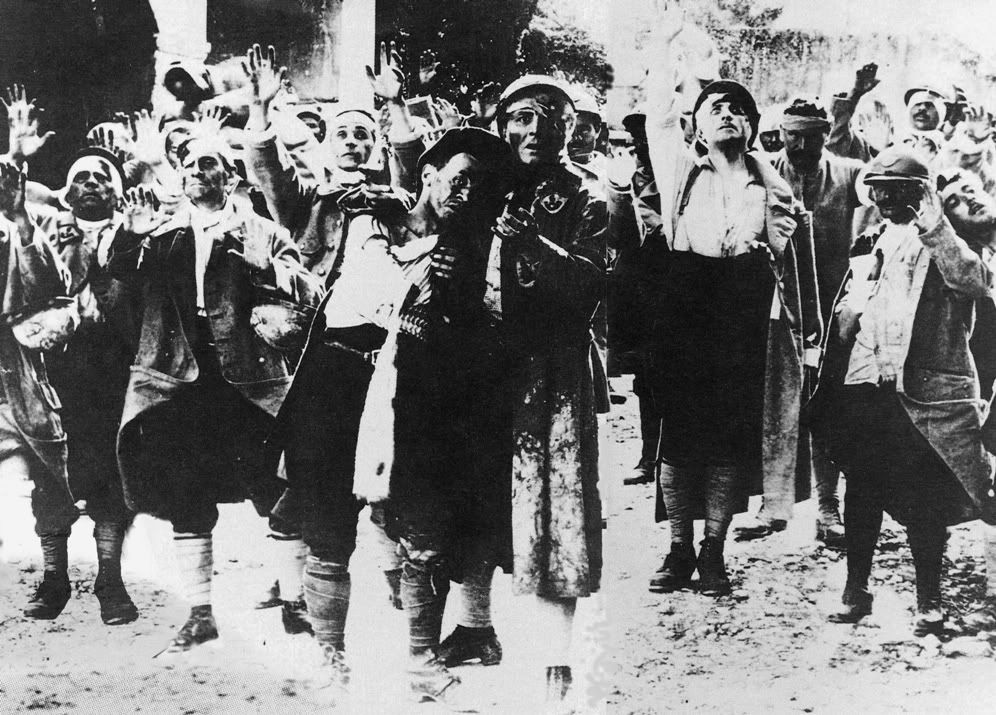J'Accuse
Francia | 1919 | 166' | Drama
Director: Abel Gance
Guion: Abel Gance
Intérpretes: Romuald Joubé, Séverin-Mars, Maryse Dauvray
Edita: Flicker Alley [USA]
Video: 1.33:1 4/3 B&N y virados a color
Audio: Dolby Digital mono [música]
Intertítulos: Francés
Subtítulos: Inglés (opcionales)
Discos: 2xDVD-9
Extras:
- Paris pendant la guerre (1915) [Corto de ficción]
- Fighting the War (1916) [filmaciones del frente de la primera guera mundial]
- Libreto de 20 páginas con 3 artículos:
- The Waste of War: Abel Gance's J'Accuse, de Kevin Brownlow
- Abel Gance's J'Accuse and Virginia Woolf's Mrs. Dalloway: Re-reading modernist novel by the light of the silver screen, de Leslie K. Hankins
- Reconstructing J'Accuse, de Annike Kross
Del artículo sobre la reconstrucción:
The Nederlands Filmmuseum holds an original tinted and toned nitrate copy (2212m) of J'Accuse in its collection, the only known surviving color copy of the film. This print was the source for the color information seen in the present reconstruction. A print o fa restoration by the Cinematheque Française made fifty years ago, formed the longest available element (3063m) and was the basis of the reconstruction in regards to editing. This print was provided to Lobster Films by Nelly Kaplan, friend and heir of Abel Gance. Furthermore, two black and white nitrate prints (1880m/2175m) and a reel of the original camera negative (259m) (all owned by Lobster Films) as well as a safety print of a worn-out nitrate copy (2228m) from the Narodny Filmovy Archive in Prague were part of the comparison.
(...)Whenever possible, the nitrate prints were the sources for scanning due to their better photographic quality, even if more damaged or (unnoticeably) shorter. The reel of the original camera negative, for example, was scanned and used entirely and completed whenever parts were missing (especially intertitles) by shots from the other copies.(...)The reconstruction resulted in the longest (3525m) and most complete version of J'Accuse that has been seen since 1919."
Este film inauguró una honrosa tradición de películas francesas mutiladas para su estreno americano, cuando se proyectó en Los Ángeles en 1921, cuenta el director Robert Florey, estaba lejos de las casi tres horas de su estreno parisino, pues duraba poco más de una hora, incluyendo escenas añadidas por los distribidores americanos que mostraban la intervención americana en la Primera Guerra Mundial, un discurso del presidente Harding y un final distinto (feliz, por supuesto).
Capturas:

 ¡Bienvenido a mundodvd! Regístrate ahora y accede a todos los contenidos de la web. El registro es totalmente gratuito y obtendrás muchas ventajas.
¡Bienvenido a mundodvd! Regístrate ahora y accede a todos los contenidos de la web. El registro es totalmente gratuito y obtendrás muchas ventajas.


 LinkBack URL
LinkBack URL About LinkBacks
About LinkBacks




















 Citar
Citar


